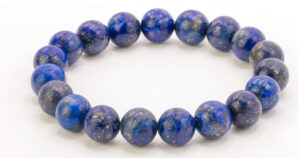Yellow Quartz Birthstone: Know This Amazing Crystal
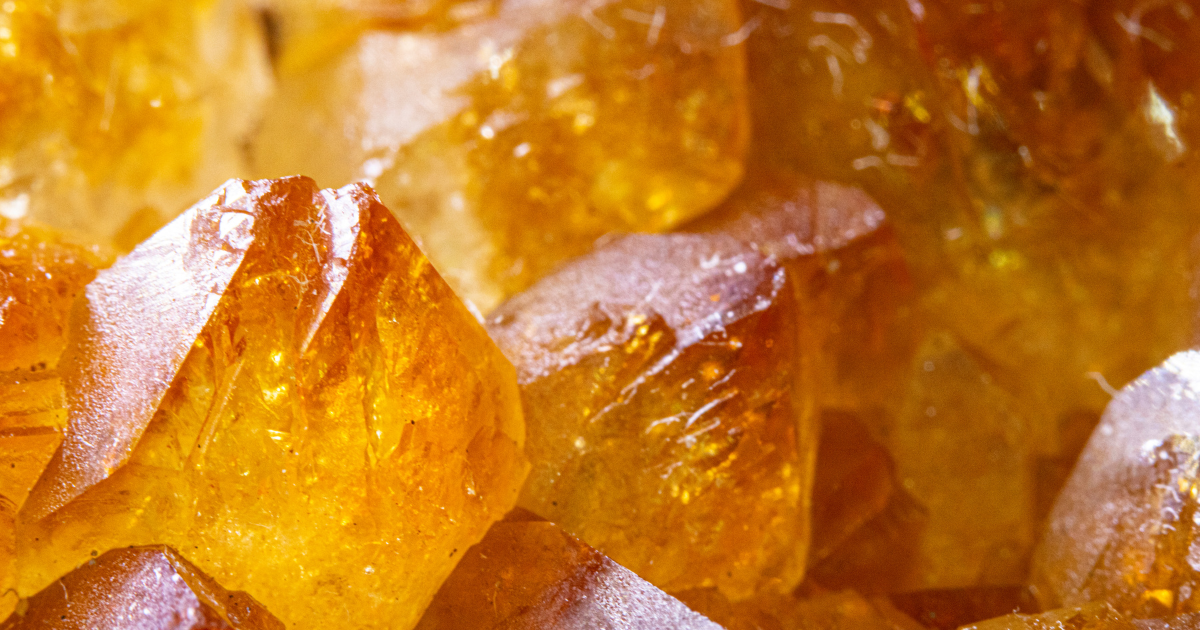
The Yellow Quartz birthstone is mainly associated with the month of November, and it has been used in Jewelry for years. It is mainly a clear yellow to brownish orange in variety. Since ancient times, Yellow Quartz has been a popular gemstone and has a history of being confused with the other November birthstone, Topaz.
Yellow Quartz has excellent properties, and so, in this article, we will explore in detail what is a Yellow Quartz Birthstone.
Table of Contents
Yellow Quartz Birthstone
Those born in November are lucky enough to have two stunning stones as their birthstone. One is Topaz, which comes in various colors, and the other is sunny Yellow Quartz. Moreover, Yellow Quartz is a yellow variety of quartz, and its name comes from the Old French word for lemon.
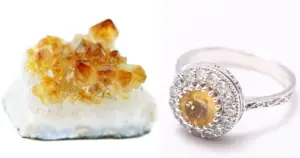
This gold gemstone is a superb choice for brightening up a generally chilly autumn month, as its warm hue is considered a gift from the sun. Yellow Quartz has been used as an ornamental gemstone since antiquity.
Yellow Quartz is considered a healing gemstone – calming, soothing, and relaxing for some. It is also said to ignite the imagination and encourage new beginnings and well-being. In ancient times, people used Yellow Quartz to protect against snake venom and evil thoughts. The ancient Egyptians used the yellow stone as a talisman in ancient Egypt.
While people thought that the stone was added for decorative purposes, you can also consider it for protection. Yellow Quartz is the ‘trader’s stone’ associated with success and wealth.
Also read: Yellow Topaz Meaning, Healing Properties, Benefits and Uses
The Benefits of Yellow Quartz Birthstone
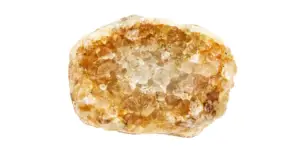
There are numerous benefits of Yellow Quartz birthstone. Yellow Quartz has amazingly beneficial physical properties, such as boosting digestion, helping the spleen, and the pancreas, helping with eye difficulties, increasing blood circulation, and reversing degenerative illnesses. Notably, its dazzling warmth is supposed to benefit persons suffering from seasonal affective disorder.
Now that you know all about What is Yellow Quartz Birthstone, here are some important facts on Yellow Quartz that will help you understand this birthstone even better.
Click here to know several Benefits of Yellow Quartz Crystal.
Knowing The Yellow Quartz Birthstone
-
Yellow Quartz
Citrine, a transparent variety of quartz, is a yellow-orange gemstone often confused with Topaz. When George Bauer, the father of modern mineralogy, first mentioned “yellow Quartz” in his 1556 book, the name “Yellow Quartz” got its popularity.
On the other hand, people quote Yellow Quartz as in 1386 – a reference used to describe the color of citron fruit. According to many origin stories, the gemstone’s name “Yellow Quartz” comes from the Latin word “citrus,” which refers to the group of citrus fruits.
You may wonder what turns Yellow Quartz from yellow to orange, nevertheless, this method still remains the subject of debate. Some say that traces of aluminum and irradiation to the crystal frame give this gem its color. According to others, the yellow color is caused by iron because crystals are price used in a solution containing iron.
Natural Yellow Quartz is so rare that the market sells iron-cured amethyst as Yellow Quartz. However, heated amethyst is not Yellow Quartz, and the presence of dichroic behavior does not mean that a stone is a natural Yellow Quartz.
-
The History of Yellow Quartz
The ancient Greeks crafted permafrost-like rock crystal decorations. People in Rome used Yellow Quartz as jewelry, and Roman pontiffs wore rings with large purple amethysts. It was prevalent in Victorian-era colorful Scottish jewelry.
Yellow Quartz is traditionally given on the thirteenth wedding anniversary and is supposed to be derived from the French term for “lemon” (citron). The bulk of Yellow Quartz available today is the result of amethyst heat treatment. Yellow Quartz birthstones are among the most affordable and sought-after yellow gemstones due to their extensive availability in various sizes.
-
Colors and Varieties of Yellow Quartz
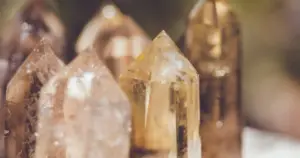
Yellow Quartz hues range from juicy lemon yellow to beautiful amber tones. Quartz contains traces of iron which give it its yellow color. It rarely occurs in nature, so most Yellow Quartz is made by heat treating other varieties of quartz – usually purple amethyst or smoky quartz – that are both more common and less expensive.
When heat is applied to these stones, they change from their original color to a beautiful golden color. Natural Yellow Quartz is almost always pale yellow and commands a much higher price than processed varieties. The most sought-after Yellow Quartz gemstones are a clear, bright yellow to brownish-red color, which is especially rare for naturally occurring Yellow Quartz. This rarity means that natural stones in this color category have an exceptionally high price tag.
The most abundant natural sources of Yellow Quartz are present in Bolivia, Madagascar, Mexico, Spain, and Uruguay. Amethysts that have been heat-treated to a golden color are primarily present in mines in Brazil. Still, other sources include France, Russia, and the United States, particularly California, Colorado, and North Carolina.
How to make use of yellow Quartz? Read here to know.
-
Shapes and sizes of Yellow Quartz
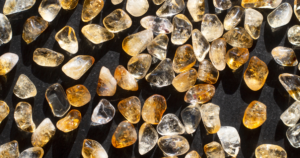
Yellow Quartz is easy to find, reasonably priced, and available in various shapes and sizes, including massive proportions, ideal for giant pendants and statement jewelry. The Mohs hardness rating of this stone is seven out of ten, indicating that it is moderately resistant to scratches. The gemstone was very popular during the Art Deco era in the early twentieth century when celebrities such as Greta Garbo and Joan Crawford were known to wear big and extravagant Yellow Quartz-adorned jewelry.
Want to know about the yellow Quartz chakras? Read here.
Some Other Yellow Gemstones
Yellow is shared by sunshine, lemons, and a variety of flowers, typically associated with sentiments of pleasure, warmth, and optimism. Yellow-colored gemstones include diamonds, Yellow Quartz, and garnets, among others.
Yellow diamonds are long-lasting in quality and value, and people use them in jewelry. However, a treasure mine of different yellow gemstones is available at moderate prices. They range from light tones to deep, warm tones.
The most common yellow gemstones are Yellow Quartz, Sapphire, Topaz, tourmaline, and transparent opal. Yellow andradite garnet, spessartine, and Mali are a type of yellow gemstones. Garnets, beryl, sphene, zircon, spodumene, clear labradorite, and orthoclase feldspar. Yellow stones that are less common or valuable include chrysoberyl, sphalerite, apatite, and prehnite.
Conclusion
The birthstones for November are Yellow Quartz. However, Yellow Quartz joined the list of contemporary birthstones in 1952.
Although Yellow Quartz is substantially less expensive, Yellow Quartz and Topaz are both available in the yellow-to-orange hue spectrum. Yellow Quartz has a Mohs hardness of 7. This information may lead some individuals to conclude that Topaz is more durable than Yellow Quartz.
